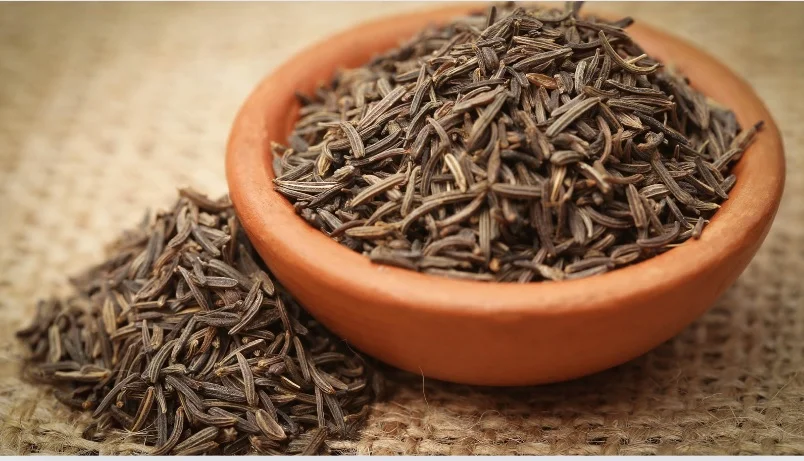caraway seed, commonly known as caraway, meridian fennel, and Persian cumin, is a fascinating biennial plant with a rich history and diverse applications. Scientifically named Carum carvi, this plant belongs to the Apiaceae family and is native to western Asia, Europe, and North Africa. Its distinctive flavor and numerous health benefits have made it a staple in culinary and medicinal traditions worldwide. This article explores the etymology, historical significance, cultivation, culinary uses, health benefits, and contemporary relevance of carvi seed.
Etymology and Historical Significance
The term “caraway” has an intriguing and somewhat ambiguous etymology. It has been referred to by various names across different cultures and time periods. The Latin term “cuminum” (cumin) and the Greek “karon” (cumin) were adapted into Latin as “carum,” which now signifies caraway. In Sanskrit, “karavi” has been translated both as “caraway” and “fennel,” indicating the spice’s historical confusion with similar plants.
English usage of “caraway” dates back to at least 1440, with some theories suggesting an Arabic origin. The spice has been prized for its aromatic seeds and essential oils, which have been utilized for flavoring food, aiding digestion, and treating various ailments throughout history.
Cultivation and Botany
caraway seed plants are biennial, meaning they complete their life cycle over two years. In the first year, the plant develops a rosette of leaves, while in the second year, it produces flowering stems that can reach up to 60 centimeters (24 inches) in height. The plant thrives in well-drained soil and requires a sunny location. It is relatively hardy and can withstand different climatic conditions, making it a versatile crop.
The flowers of the caraway seed plant are small and white, arranged in compound umbels typical of the Apiaceae family. The seeds, which are the primary harvested part, are crescent-shaped and have five pale ridges. These seeds are typically harvested in late summer when they begin to turn brown.
Culinary Uses
caraway seeds are renowned for their warm, slightly bitter taste with hints of anise and citrus. This unique flavor profile has made them a popular ingredient in various culinary traditions:
- Baking: Carvi seeds are a classic addition to rye bread, lending it a distinctive flavor. They are also used in cakes, biscuits, and traditional German and Scandinavian baked goods.
- Savory Dishes: The seeds complement a range of savory dishes, including sauerkraut, goulash, and roasted meats. In Middle Eastern cuisine, they are often added to spice blends and used in dishes like harissa.
- Cheese and Dairy: Carvi seeds are used to flavor certain cheeses, such as Havarti and Tilsit. They are also added to buttermilk and yogurt for a unique twist.
- Liqueurs and Spirits: The seeds are a key ingredient in several alcoholic beverages, including the Scandinavian spirit aquavit and the German liqueur kümmel.

Health Benefits
caraway seeds are not only valued for their culinary applications but also for their numerous health benefits. They have been used in traditional medicine for centuries, and modern research has supported many of their therapeutic properties:
- Digestive Health:caraway seeds are known for their carminative properties, which help relieve bloating, gas, and indigestion. They stimulate the production of digestive enzymes, promoting efficient digestion.
- Antioxidant Properties: The seeds are rich in antioxidants, which help protect the body from oxidative stress and reduce the risk of chronic diseases.
- Antimicrobial Effects: caraway seeds have demonstrated antimicrobial properties, making them effective against various bacterial and fungal infections.
- Anti-inflammatory Benefits: The seeds contain compounds that exhibit anti-inflammatory effects, which can help reduce inflammation in the body and alleviate symptoms of conditions like arthritis.
- Respiratory Health: caraway seeds are used in traditional remedies to treat coughs, bronchitis, and other respiratory ailments. They help clear mucus and soothe the throat.
Contemporary Relevance
In today’s health-conscious and flavor-seeking world, caraway seeds are experiencing a resurgence in popularity. Their versatility and health benefits align with current trends in natural and holistic wellness. They are increasingly featured in gourmet recipes, health supplements, and alternative medicine.
Culinary Trends
Modern chefs and food enthusiasts are rediscovering the culinary potential of caraway seeds. They are being used creatively in both traditional and contemporary dishes, from artisanal breads to innovative spice blends. The seeds’ unique flavor adds depth and complexity to a wide range of cuisines, making them a valuable addition to any spice rack.
Natural Remedies
As people seek natural alternatives to pharmaceuticals, caraway seeds are gaining recognition for their medicinal properties. They are available in various forms, including essential oils, extracts, and teas, and are marketed as remedies for digestive issues, respiratory conditions, and more.
Sustainability
caraway seed cultivation is relatively sustainable, requiring minimal chemical inputs and being adaptable to different growing conditions. This makes it an eco-friendly crop, contributing to the growing demand for sustainable and organic food products.
Conclusion
caraway seed, or caraway, is a spice with a rich history and a promising future. From its ambiguous etymology and historical significance to its diverse culinary applications and numerous health benefits, carvi seed continues to captivate and inspire. As we explore new ways to incorporate this ancient spice into our diets and wellness routines, its enduring legacy is a testament to its timeless appeal and versatility. Whether you’re a gourmet chef, a health enthusiast, or simply someone looking to add a unique flavor to your meals, carvi seed is a spice worth celebrating.









